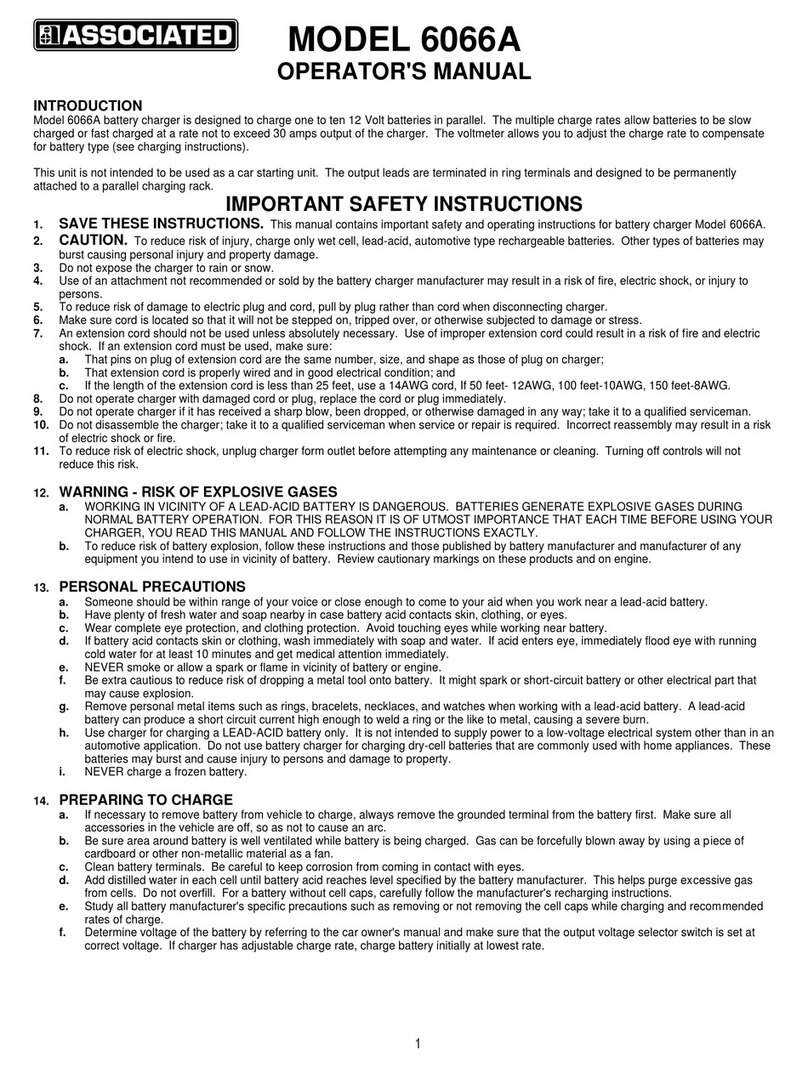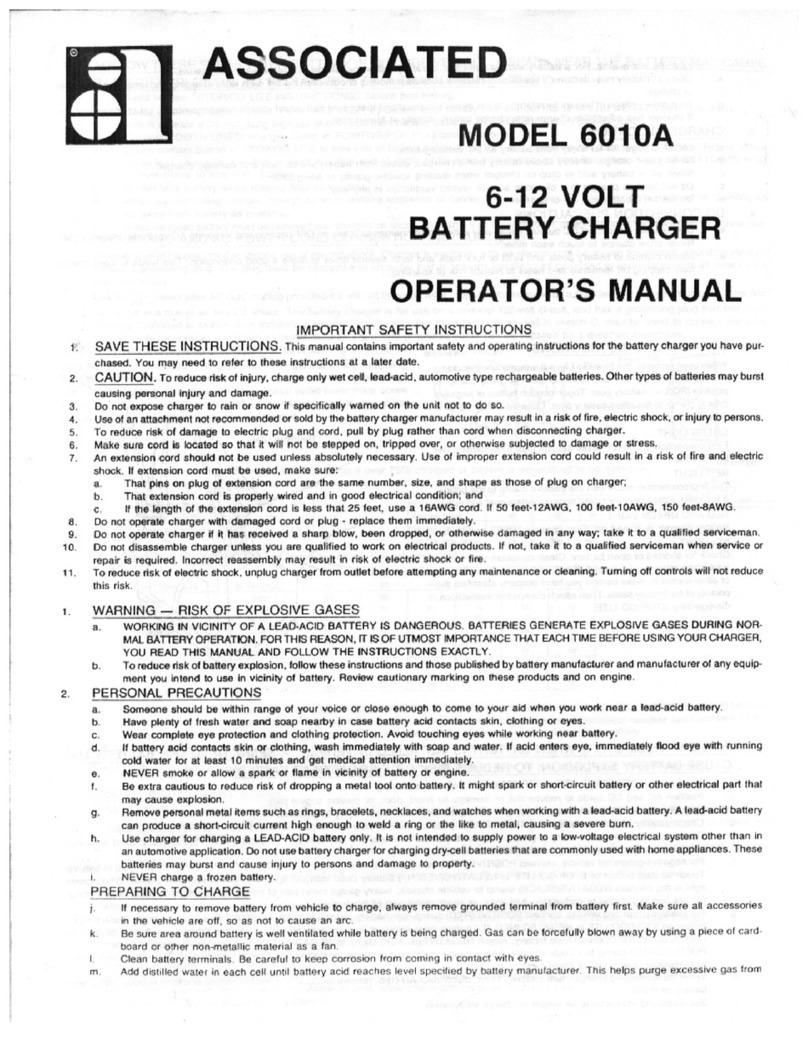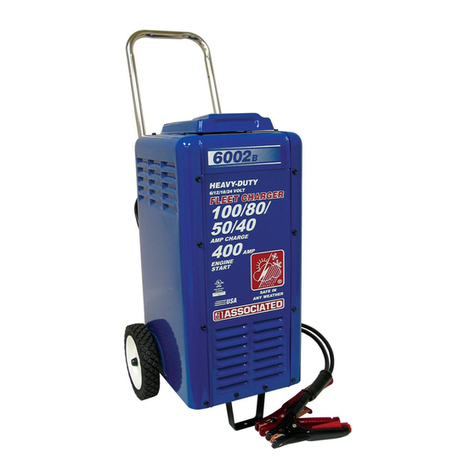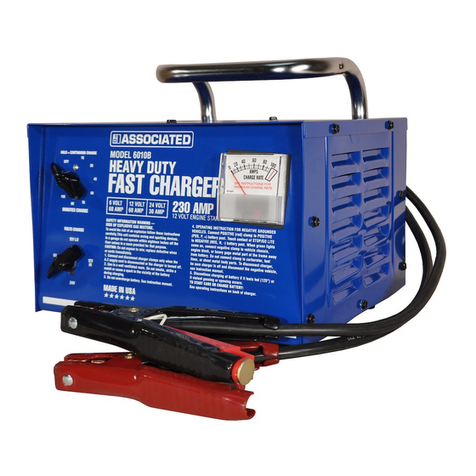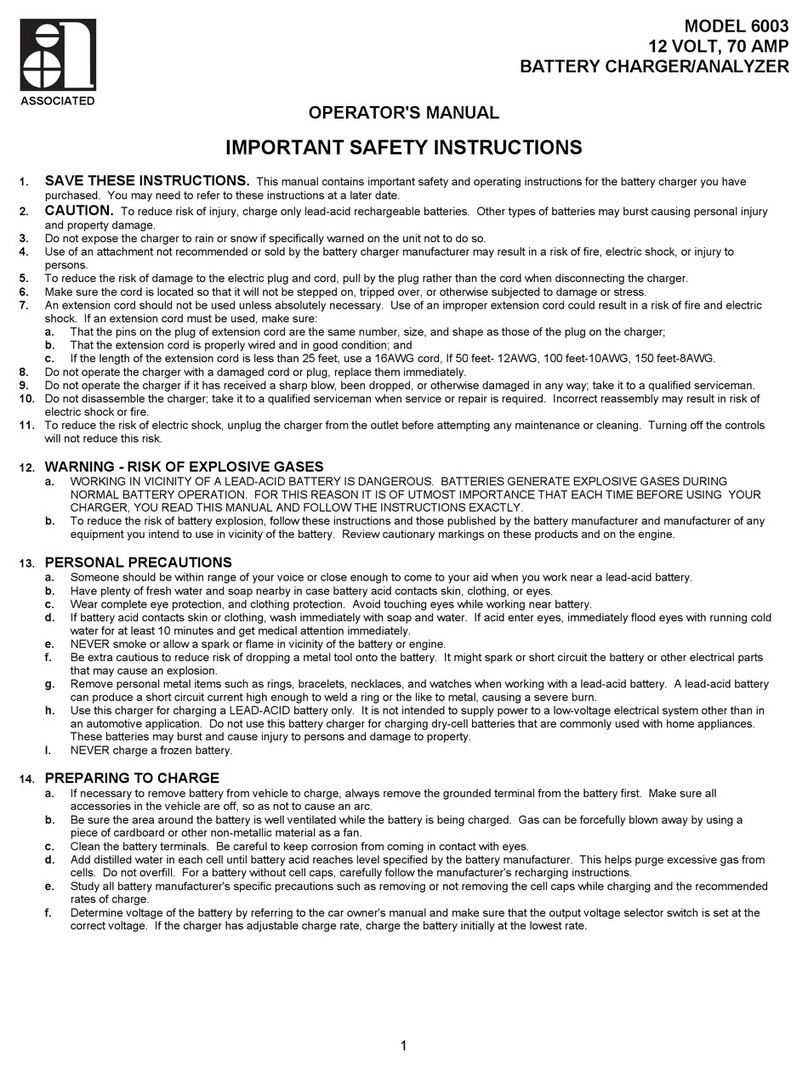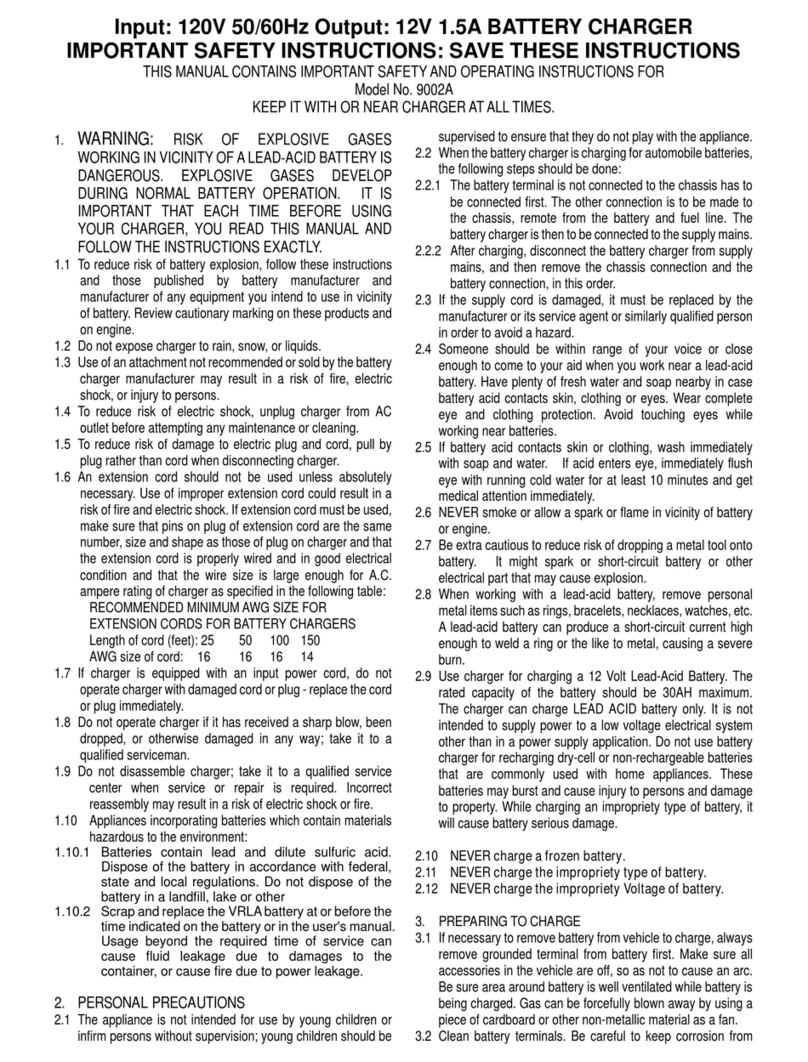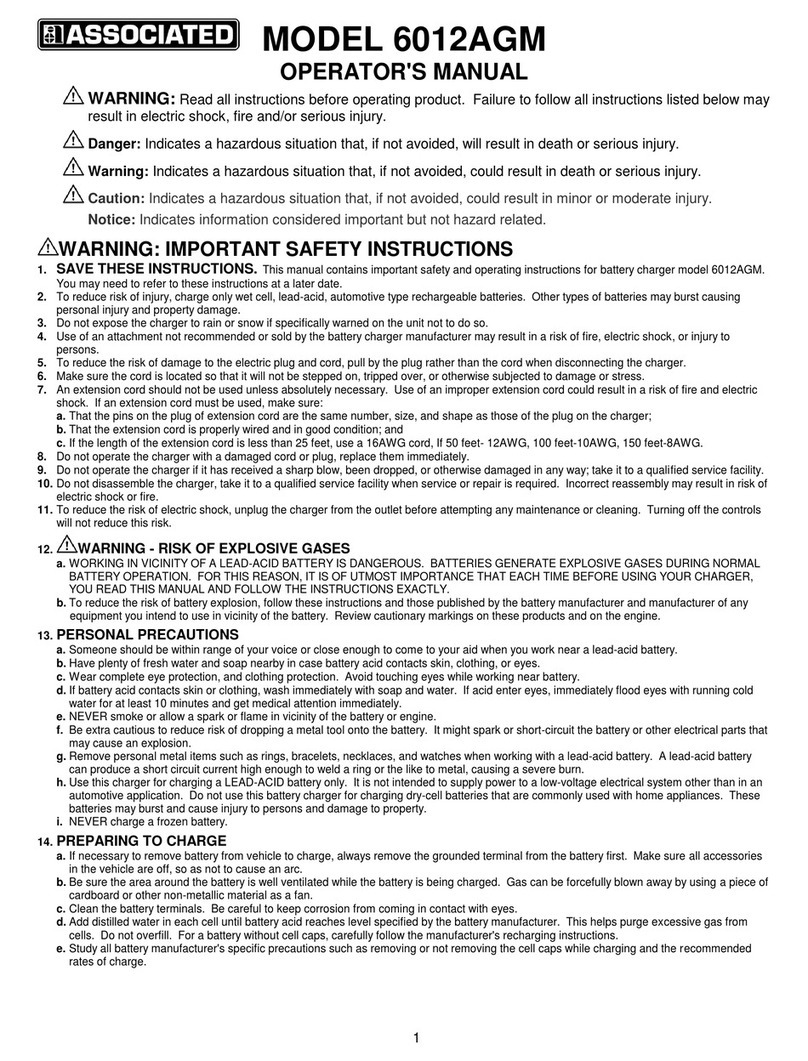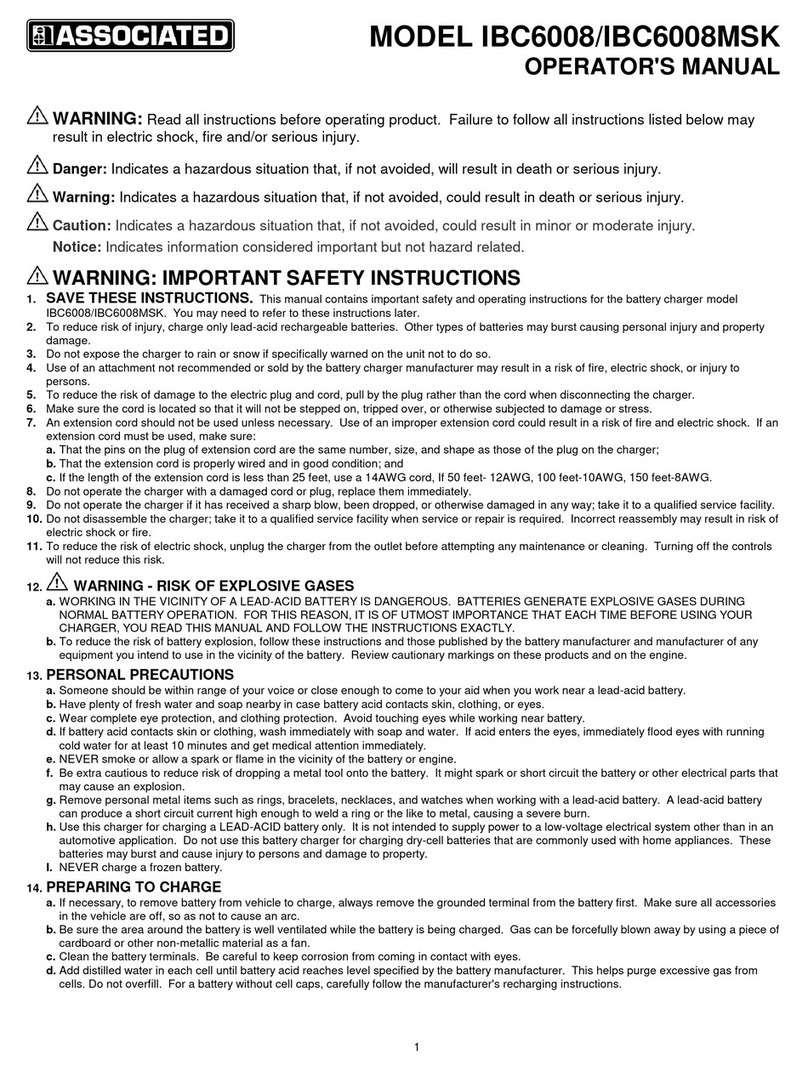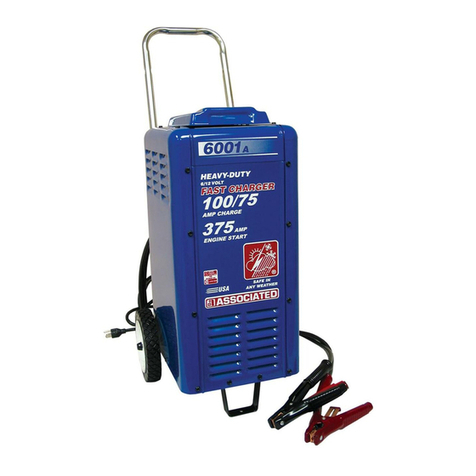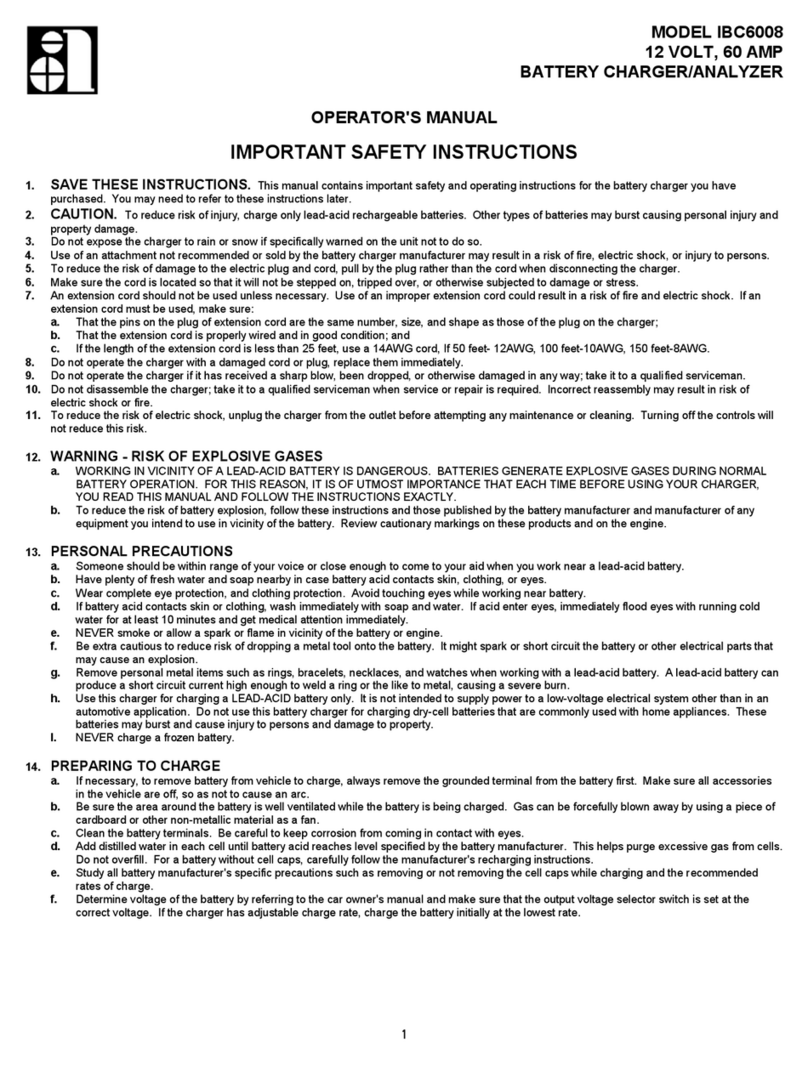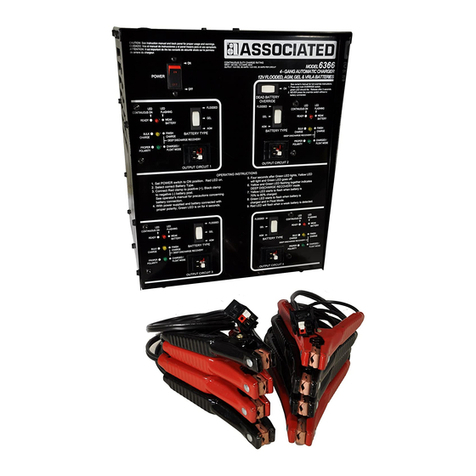
5
MODEL ESS6100 EN
g. Remove personal metal items such as rings, bracelets, necklaces, and watches when working with a lead-ac-
id battery. A lead-acid battery can produce a short circuit current high enough to weld a ring or the like to
metal, causing a severe burn.
h. Use this charger for charging LEAD-ACID and Li-ion automotive batteries only. It is intended to supply power
to a low-voltage electrical system in an automotive application with a battery. Do not use this battery charger
for charging dry-cell batteries that are commonly used with home appliances. These batteries may burst and
cause injury to persons and damage to property.
i. NEVER charge a frozen battery.
14. PREPARING TO CHARGE
a. If it is necessary to remove battery from vehicle to charge, always remove the grounded terminal from the
battery rst. Make sure all accessories in the vehicle are off, so as not to cause an arc.
b. Be sure the area around the battery is well ventilated while the battery is being charged. Gas can be forceful-
ly blown away by using a piece of cardboard or other non-metallic material as a fan.
c. Clean the battery terminals. Be careful to keep corrosion from coming in contact with eyes.
d. Add distilled water in each cell until battery acid reaches level specied by the battery manufacturer. This
helps purge excessive gas from cells. Do not overll. For a battery without cell caps, carefully follow the
manufacturer’s recharging instructions.
e. Study all battery manufacturer’s specic precautions such as removing or not removing the cell caps while
charging and the recommended rates of charge.
f. Determine voltage of the battery by referring to the car owner’s manual and make sure that the output volt-
age selector switch is set at the correct voltage. If the charger has adjustable charge rate, charge the battery
initially at the lowest rate.
15. CHARGER LOCATION
a. Locate the charger as far away from the battery as the DC cables permit.
b. Never place the charger directly above the battery being charged; gases from the battery will corrode and
damage the charger.
c. Never allow battery acid to drop on the charger when reading the specic gravity or lling battery.
d. Do not operate the charger in a closed-in area or restrict ventilation in any way.
e. Do not set a battery on top of the charger.
16. 16. DC CONNECTION PRECAUTIONS
a. Connect and disconnect the DC output clamps only after setting the charger switches to the OFF position and
removing the AC cord from the electric outlet. Never allow the clamps to touch each other.
b. Attach the DC clamps to the battery post and twist or rock back and forth several times to make a good con-
nection. This tends to keep the clamps from slipping off the terminals and helps to reduce the risk of sparking.
17. FOLLOW THESE STEPS WHEN THE BATTERY IS INSTALLED IN A VEHICLE. A
SPARK NEAR THE BATTERY MAY CAUSE A BATTERY EXPLOSION. TO REDUCE
THE RISK OF A SPARK NEAR THE BATTERY:
a. Position the AC and DC cords to reduce the risk of damage by the hood, door, or moving engine parts.
b. Stay clear of fan blades, belts, pulleys, and other parts that can cause injury to persons.
c. Check the polarity of the battery post. The POSITIVE (POS, P, +) battery post usually has a larger diameter
than the NEGATIVE (NEG, N, -) post.
d. Determine which post of the battery is grounded (connected) to the chassis. If the negative post is grounded
to the chassis (as in most vehicles), see item (e). If the positive post is grounded to the chassis, see item (f).
e. For negative-grounded vehicles, connect the POSITIVE (RED) clamp from the battery charger to the POS-
ITIVE (POS, P, +) ungrounded post of the battery. Connect the NEGATIVE (BLACK) clamp to the vehicle
chassis, heavy gauge metal part of the frame, or engine block, away from the battery. Do not connect to the
carburetor, fuel lines, or sheet metal body parts.
f. For positive-grounded vehicles, connect the NEGATIVE (BLACK) clamp from the battery charger to the NEG-
ATIVE (NEG, N, -) ungrounded post of the battery. Attach the POSITIVE (RED) clamp to the vehicle chassis
or engine block away from the battery. Do not connect the clamp to the carburetor, fuel lines, or sheet-metal
body parts.
g. When disconnecting the charger, turn the switches to OFF, disconnect the AC cord, remove the clamp from
the vehicle chassis, and then remove the clamp from the battery terminal.
h. See the operating instructions for length of charge information.

